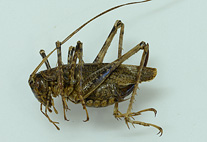Abstract
The caridean shrimp species Lebbeus armatus (Owen, 1839) (Thoridae), originally described from Kamchatka, is reinstated from the synonymy of L. groenlandicus (Fabricius, 1775) and redescribed. It is easily distinguished from L. groenlandicus by having dense covering of short setae on the carapace and lateral parts of the pleon (versus only sparse setae are present), the clearly delimited branchial ridge on the carapace (versus at most a trace of a branchial ridge being discernible), the postrostral dorsal teeth noticeably becoming stronger and higher anteriorly (versus the anteriormost postrostral tooth is not the strongest), the higher number of ventral teeth of the second pleuron (three to five versus one) and of the third and fourth pleura (three or four versus one or two), and the usual presence of one or two spines on the carpi of the third to fifth pereopods (versus unarmed). A new species, L. magnificus, is described and illustrated on the basis of five specimens from the Kitami-Yamato Bank, southwestern Sea of Okhotsk, Hokkaido, Japan. The new species appears closest to L. groenlandicus, but is easily distinguished from the latter by having five postrostral teeth in females (versus four), more numerous ventral teeth on the fifth pleuron (three or four versus two), the stouter inner flagellum of the antennule in males, and the more numerous meral spines on the third to fifth pereopods. Previous records of L. groenlandicus from East Asian waters are referred to L. armatus. Records of L. groenlandicus from the northeastern Pacific remain to be reassessed, because specimens reported from the area do not agree in some characters with any of the three species treated in this study.

